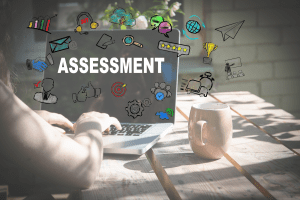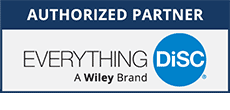Effective management is crucial to every company’s success. Management training and development is one of the most impactful investments an organization can make, whether it’s an online course, seminar, or management assessment. Managers equipped with the right tools and knowledge can improve overall company performance and culture and support sustainable growth. Here are the key areas where management training can benefit your managers and your organization:
Improve Communication Skills
Effective communication is the backbone of any successful organization. Management training focuses on enhancing communication skills, enabling managers to convey their ideas clearly, listen actively, and foster open dialogue within their teams. When managers communicate effectively, they bridge gaps between departments, prevent misunderstandings, and ensure that everyone is aligned with the company’s goals. This leads to a more cohesive work environment where team members feel heard and understood.
Expand Self-Awareness
Management training courses and assessments can foster self-awareness, allowing managers to understand, their strengths, challenges, and biases. Assessments that compare the manager’s style and strengths to other members of the team can increase understanding, help build better teams and improve results. Self-awareness is key to making more informed and balanced decisions that benefit the entire organization.

Increase Productivity
When managers are well-trained, they can lead their teams to higher productivity. Management training equips leaders with strategies to streamline processes, set realistic goals, and motivate their teams to achieve their best work. Fostering an environment where efficiency is prioritized will help organizations see a significant improvement in overall performance and income.
Enhanced Employee Morale
Understanding the importance of employee morale is a hallmark of a good manager. Management training and assessments teach leaders how to create a positive work environment where employees feel valued and motivated. When morale is high, employees are more likely to be engaged, committed, and loyal to the company. This not only reduces turnover but also boosts the overall energy and enthusiasm within the workplace.
Productive Conflict Resolution
Conflicts are inevitable, but effective management can make a difference. Managers need the skills to address conflicts between manager-employee and employee-employee. By learning techniques for conflict resolution, managers can prevent disputes from escalating, maintain a stable work environment, and ensure that issues are resolved in a way that is fair and satisfactory for all parties involved.
Opportunity for Feedback
Feedback is a powerful tool for growth, both for managers and their teams. Managers should emphasize the importance of giving and receiving feedback. By creating a culture where feedback is encouraged, managers can help their teams be heard and grow. Moreover, managers who are open to feedback can also learn from others and become more effective leaders over time.
Investing in management training is not just about developing individual leaders; it’s about fostering a thriving organizational culture. From improving communication and decision-making to boosting productivity and morale, the benefits of management training are far-reaching.
Organizations that prioritize management training will see immediate improvements in leadership effectiveness, employee retention, and long-term success.
Marilyd Montalvo has been a part of the Corexcel team for over seven years. She has been a Certified DiSC Practitioner since 2017 and has worked with many organizations across the country using DiSC to build team morale, improve communication, and increase self-awareness and collaboration in the workplace. Marilyd is also a certified PXT Select Practitioner helping many organizations hire right the first time. She takes pride in providing quick, efficient, and thorough support to all of our clients. Marilyd works hard to ensure that Corexcel meets their mission of providing our customers with the tools to develop individually while excelling professionally.









